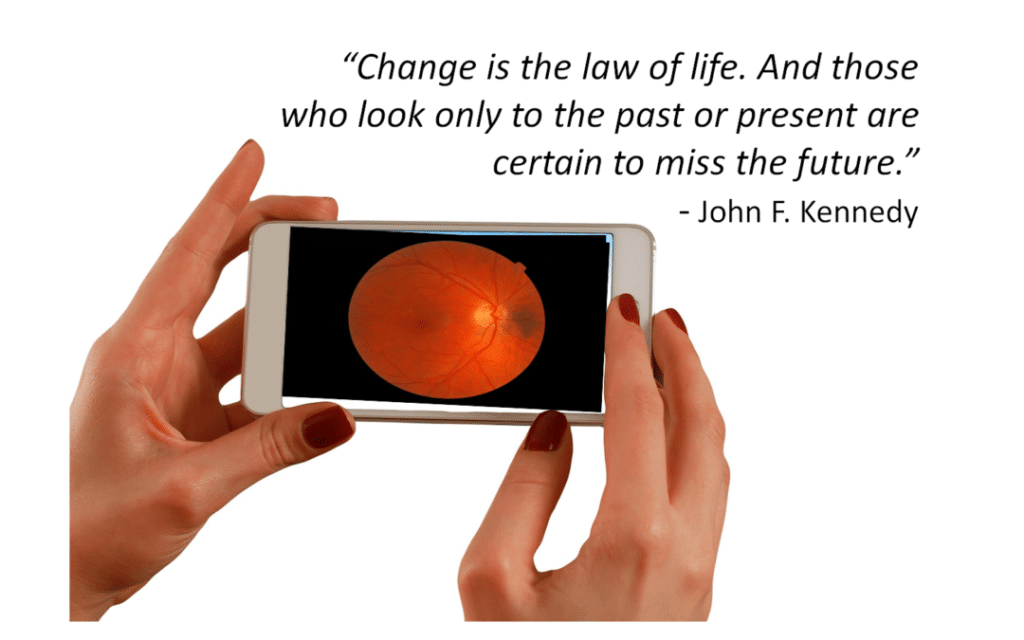Why Should Optometrists Care About Limiting Beliefs?

We all have limiting beliefs. In fact, you could call them the “OG pandemic.” These beliefs often live silently in the background of our minds, influencing the way we see ourselves, others, and the world around us. Whether it’s about personal relationships, professional aspirations, or business opportunities, limiting beliefs dictate what we believe we are capable of. Without us even realizing it, they can become the internal rulebook that tells us what’s possible or impossible.
The problem is, these beliefs are rarely based on fact. They manifest as fears, anxieties, or persistent obstacles—things that seem insurmountable no matter what you do. In both your business and personal life, they show up as roadblocks that hinder your success, joy, and overall well-being.
But here’s the thing—you’re an Optometrist. You’ve spent years studying, perfecting your clinical skills, and running your practice. Why should you, a healthcare provider, be concerned about limiting beliefs? How does this affect your practice, your success, or your ability to deliver exceptional patient care?
Well, let me explain why you should care.
The Foresight Report: Predictions for Optometrists’ Future
The 2016 Foresight Project Report made a bold prediction: digital technology and shifting demographics would drastically change the landscape for healthcare providers by 2020. The report highlighted that automation, DIY health opportunities, and vast online resources would challenge traditional methods in optometry.
It also warned that unless optometrists adapted, they could find themselves left behind.
Here are a few key predictions from the report:
- Automation in diagnostic tools: Professional testing and measurement tools would become more automated.
- DIY health tools for patients: Patients would take their healthcare into their own hands with the help of digital tools.
- Revolution in eyewear: 3D printing and made-to-order frames would disrupt the traditional eyewear industry.
Fast-forward to today. Has the optical industry changed as dramatically as predicted? If you had asked me that question pre-2020, I might have said no. But then the COVID-19 pandemic hit, and everything changed overnight.
The Pandemic’s Impact: Accelerating the Shift to Digital Health
A new report from the U.C. Berkeley Labor Center shows how technology is impacting healthcare jobs and predicts that technological adoption will accelerate due to the pandemic. According to CNBC, Americans are increasingly opting for virtual doctor visits, ordering medications online, and using at-home medical testing.
Here are three key points that highlight the shift to digital healthcare:
- Investors are pouring billions into digital health. In the first quarter of 2020 alone, venture capitalists invested $3.1 billion in this sector.
- Patients are choosing virtual care over in-person visits, and this trend is expected to continue.
- Innovation in digital healthcare is being fast-tracked to meet the growing demand.
In short, COVID-19 has accelerated the pace of change in healthcare, and the optical industry is no exception. The question now is: How can you, as an optometrist, thrive in this new reality?
Why Limiting Beliefs Matter in This Fast-Evolving World
Here’s where limiting beliefs come into play.
The biggest barrier to your success in this new digital era might not be a lack of knowledge or resources—it might be the internal dialogue you’re having with yourself. Limiting beliefs about your ability to adapt to technology, the viability of your practice, or even the future of optometry itself can hold you back from making the necessary changes to thrive.
Even with the best tools and resources, if you don’t believe in your own ability to succeed in this rapidly changing environment, you won’t.
Consider this: If you believe that virtual care is too difficult to implement in your practice, you might avoid exploring it altogether, even though it could open up new revenue streams. Or if you believe that patients won’t adapt to new technologies, you may miss out on opportunities to offer cutting-edge solutions that could set your practice apart.
Optometrists Who Will Thrive Are the Ones Who Challenge Their Limiting Beliefs
Optometrists who can challenge and overcome their limiting beliefs will be the ones who succeed. Here are a few ways to start doing that:
- Recognize the Belief: The first step is awareness. What are the thoughts that immediately pop into your head when you’re faced with a challenge or an opportunity? Are they based on fear or past experiences?
- Question Its Validity: Once you recognize a limiting belief, ask yourself if it’s actually true. What evidence do you have to support it? Are you basing it on past failures or assumptions?
- Reframe the Belief: Turn the limiting belief into an empowering one. Instead of thinking, “I can’t offer telehealth services,” reframe it as “I’m learning how to integrate telehealth into my practice.”
- Take Action: Small, consistent actions toward overcoming your limiting belief can lead to massive shifts in your mindset. Start with one thing—whether it’s researching new technologies or setting up a Google Business Profile—and build from there.
The Bottom Line
Limiting beliefs are not just abstract concepts; they can have a tangible impact on the success of your practice. As an optometrist navigating a post-pandemic, digitally-driven world, you must challenge these beliefs to adapt, grow, and thrive. Your ability to evolve alongside the industry depends on your mindset as much as your skill set.
Now it’s your turn to share. Do you agree or disagree? Let me know in the comments below! If you found value in this article, consider sharing it with a friend. And as always, continue to Empower, Connect, and Promote each other’s success. Until next time!
Images by Gerd Altmann from Pixabay.





Responses